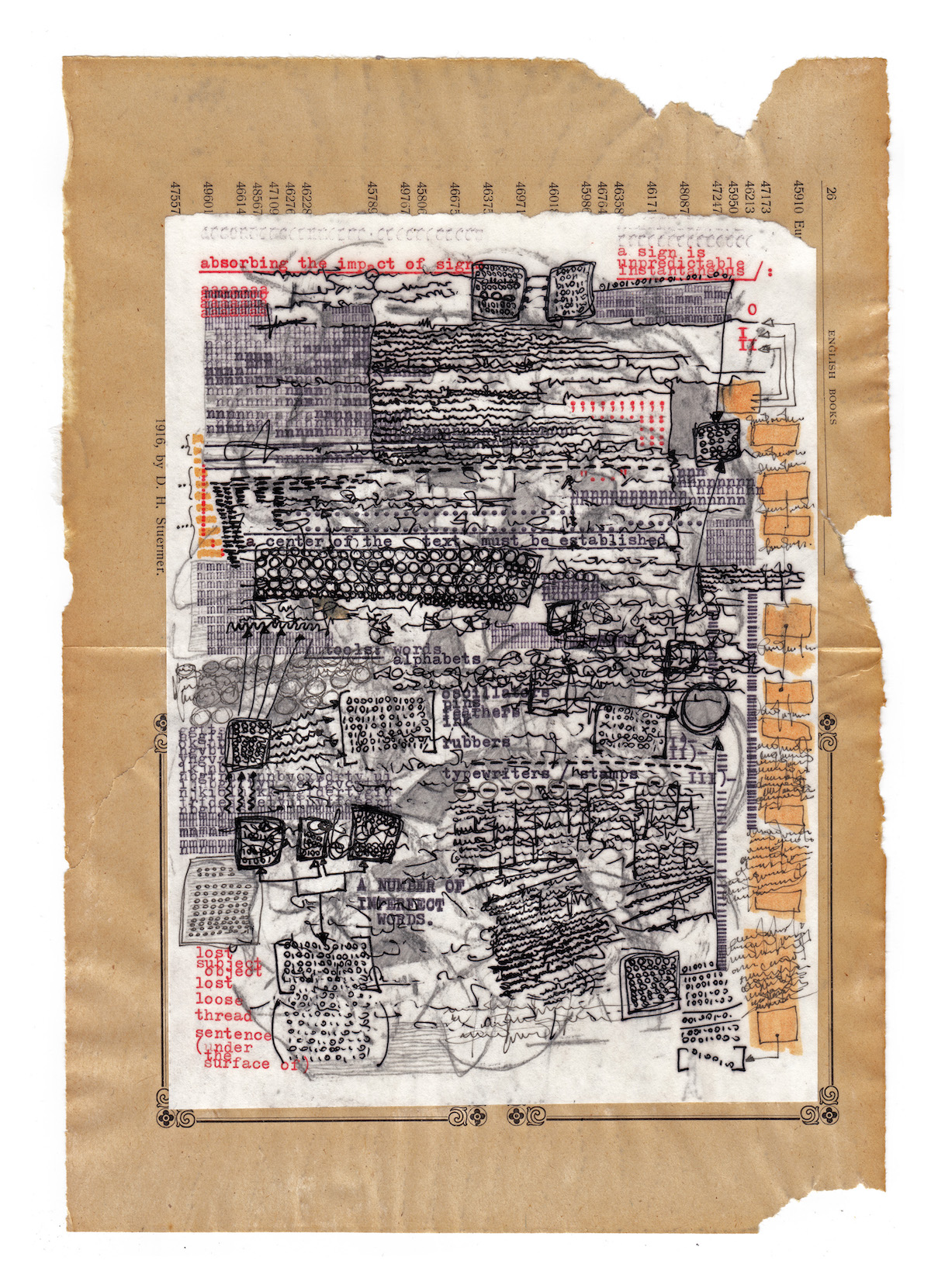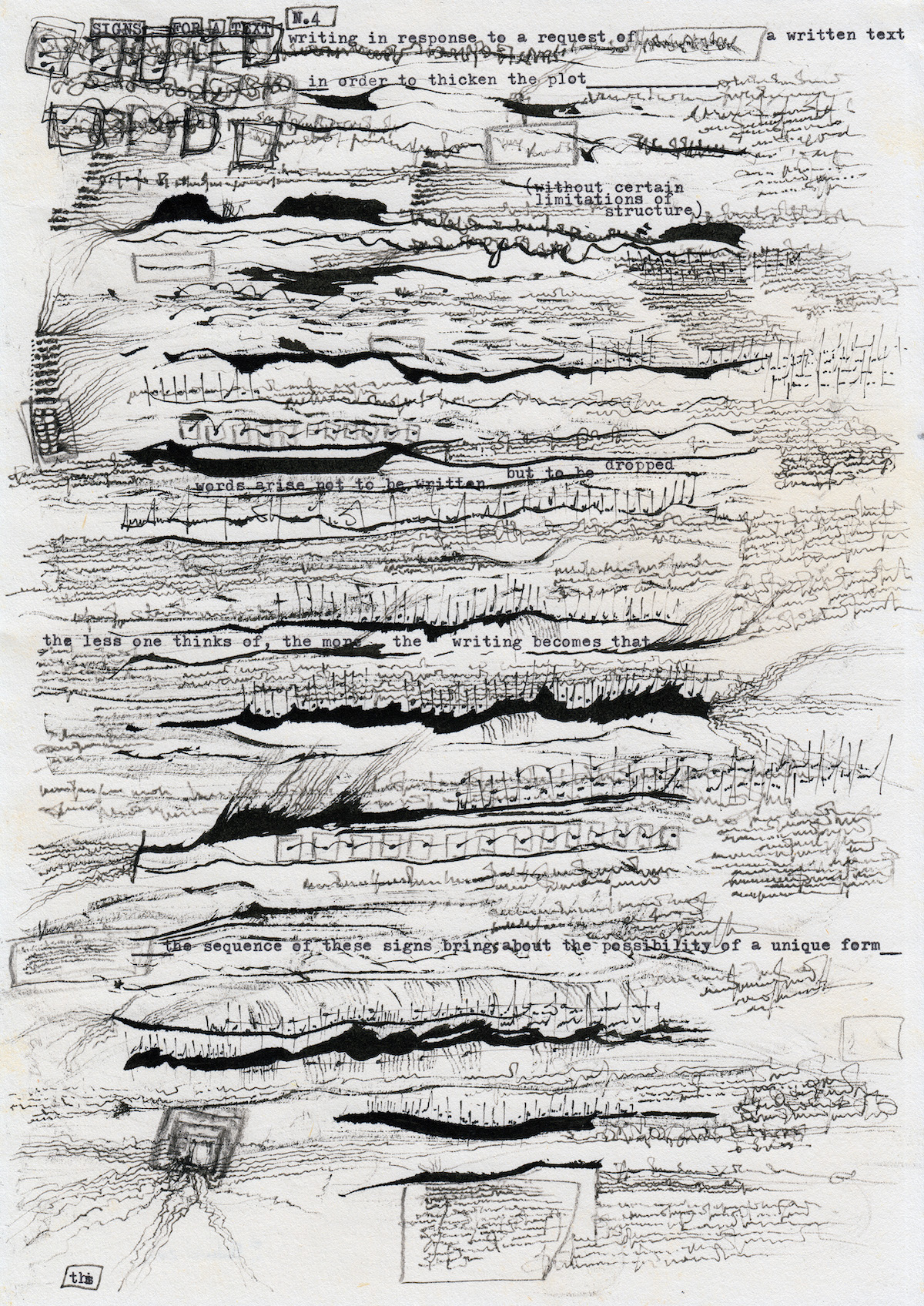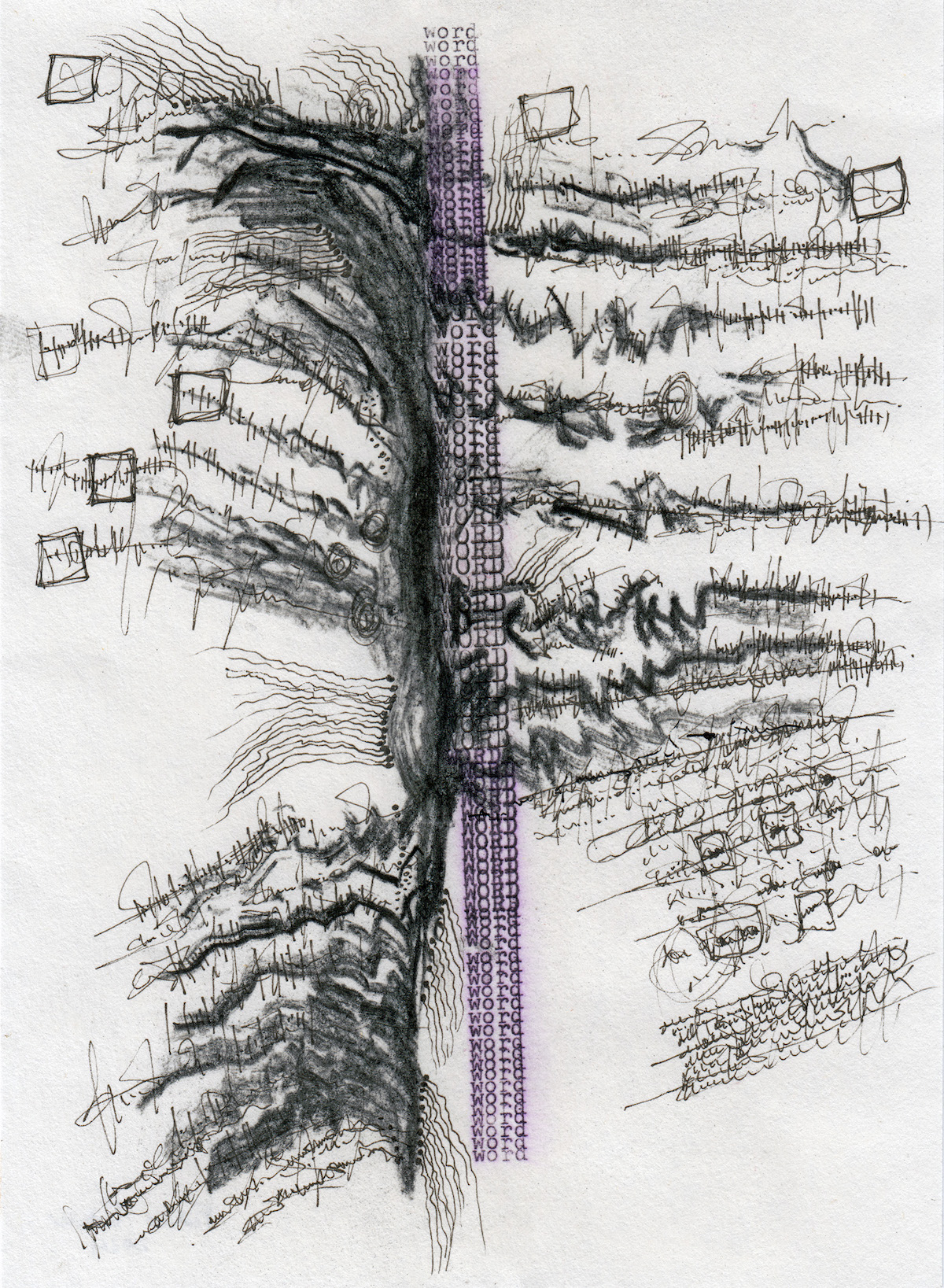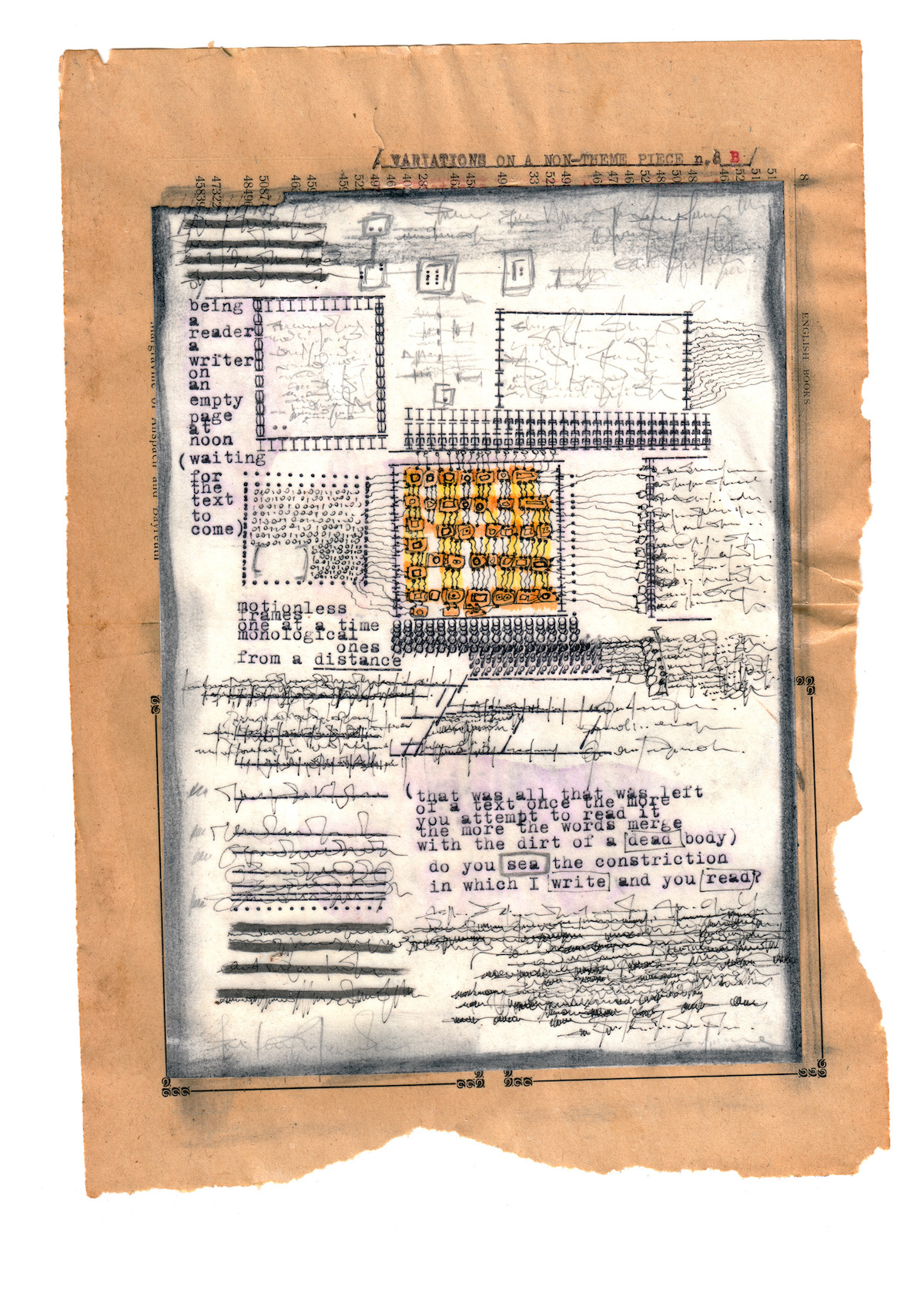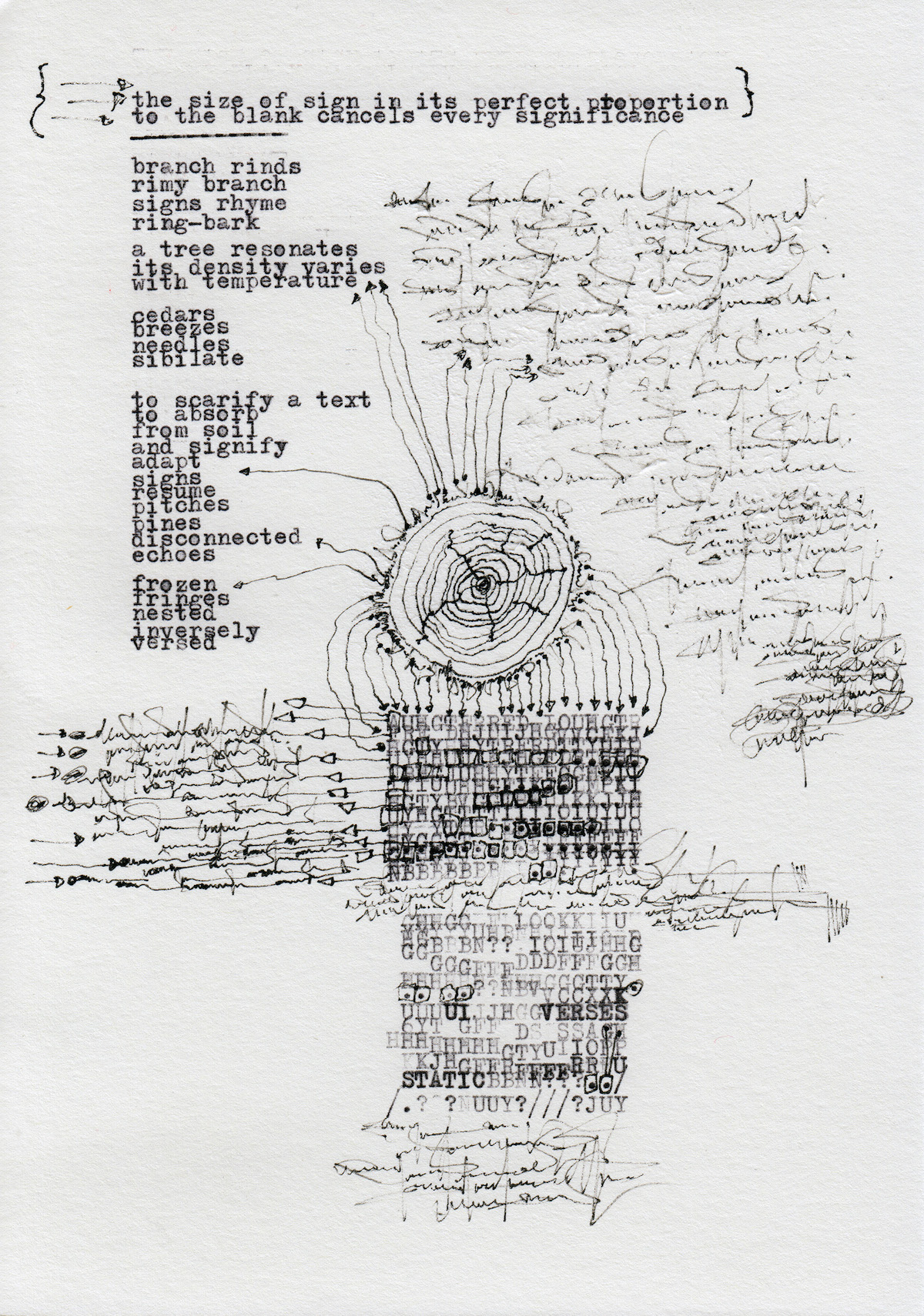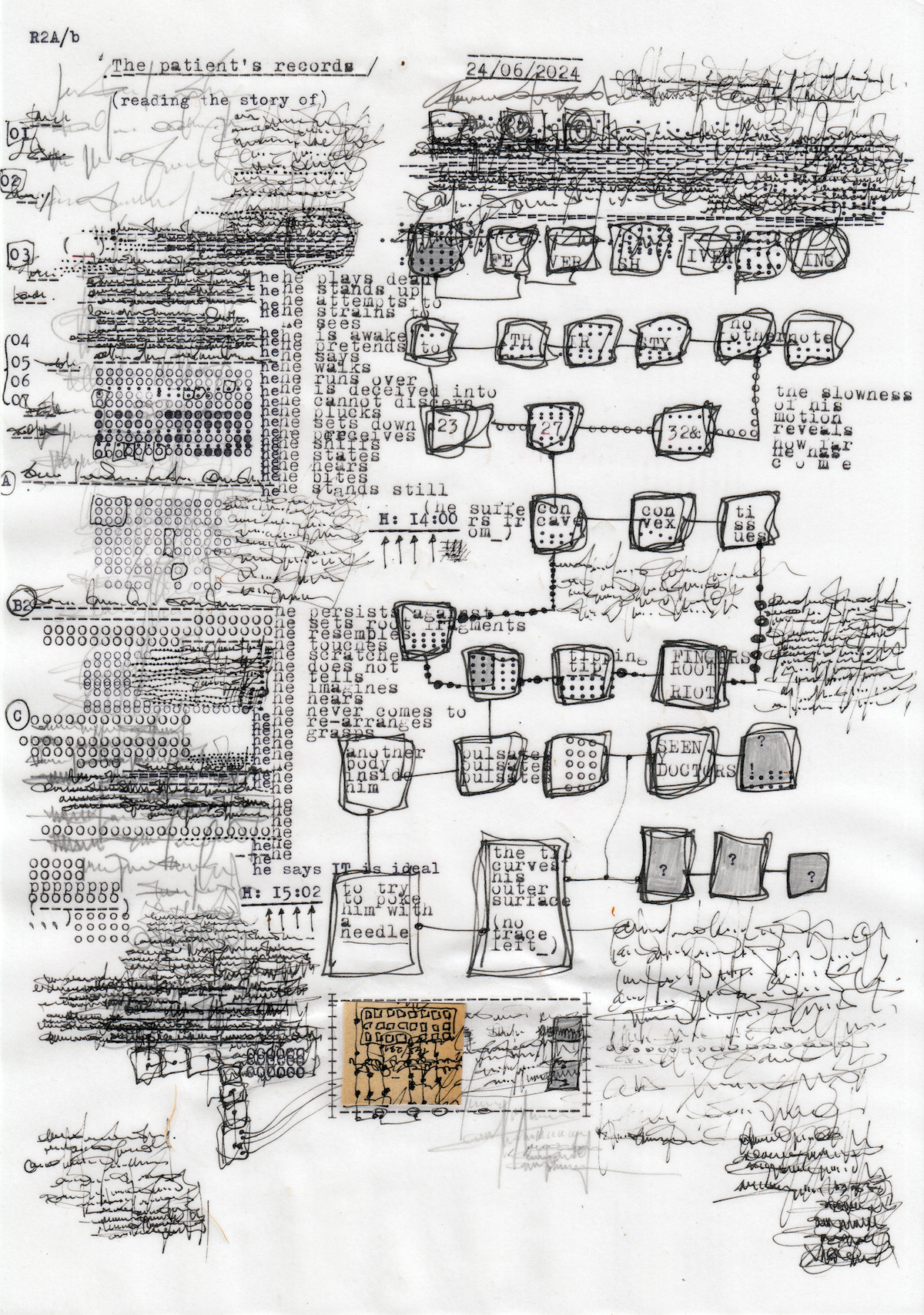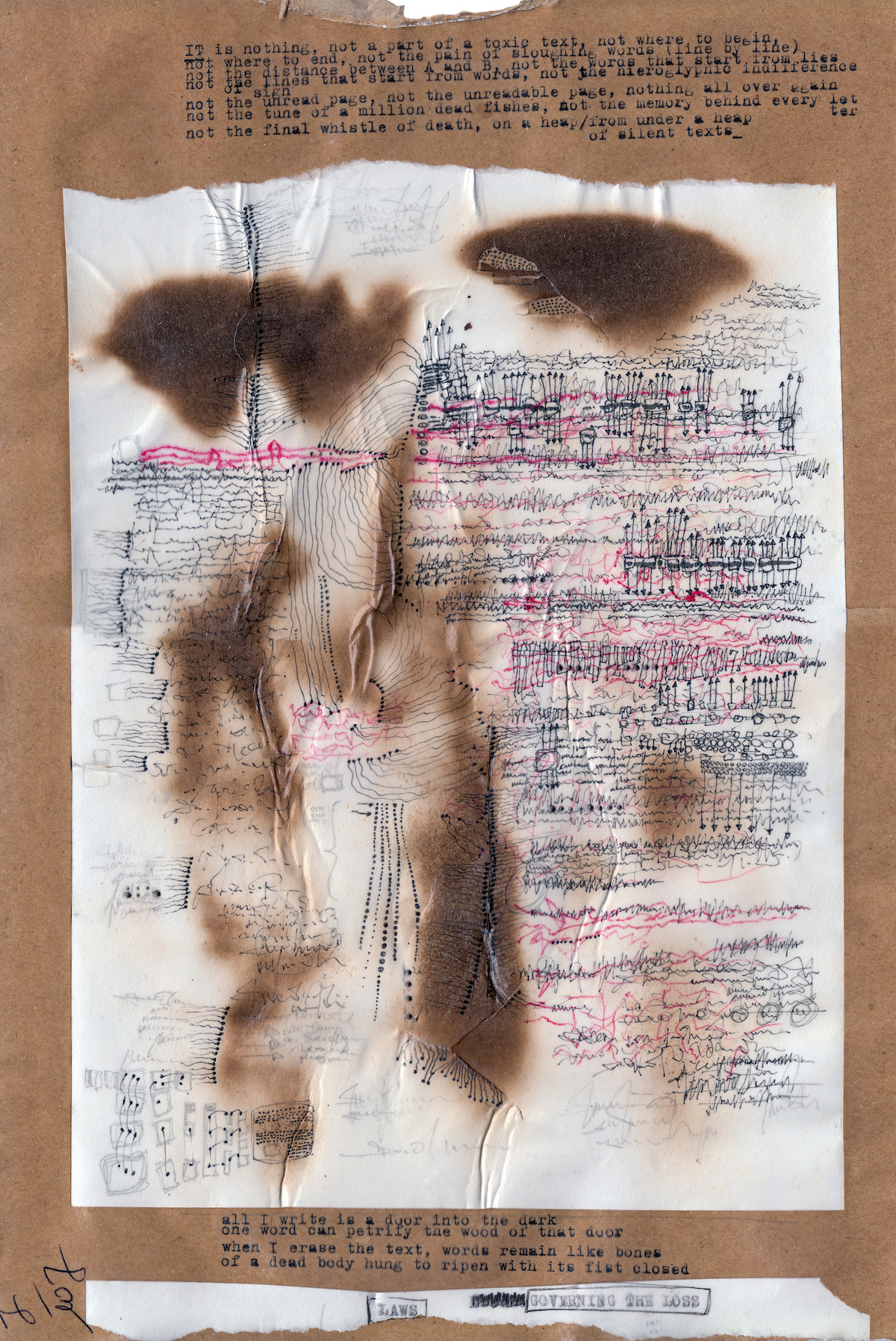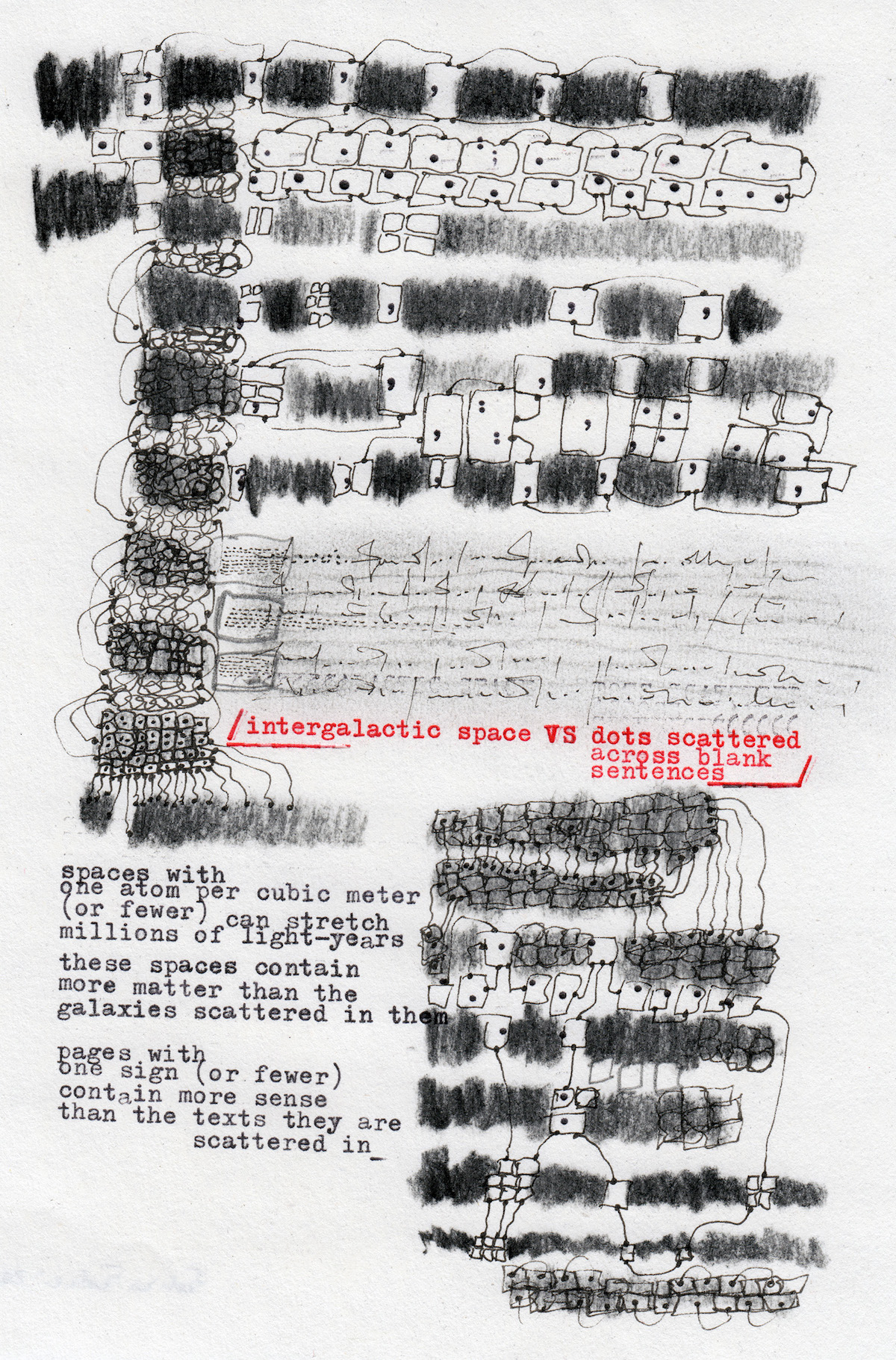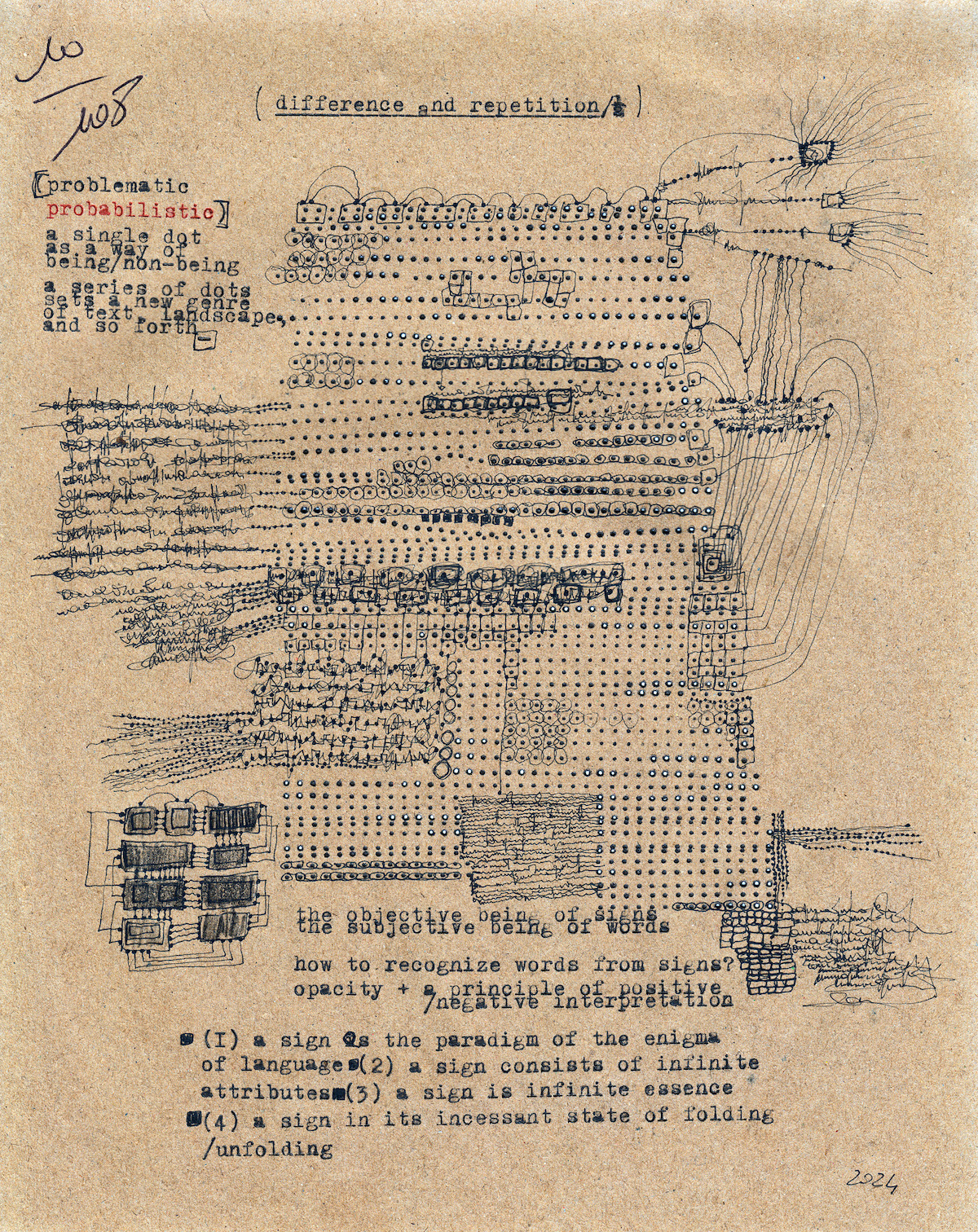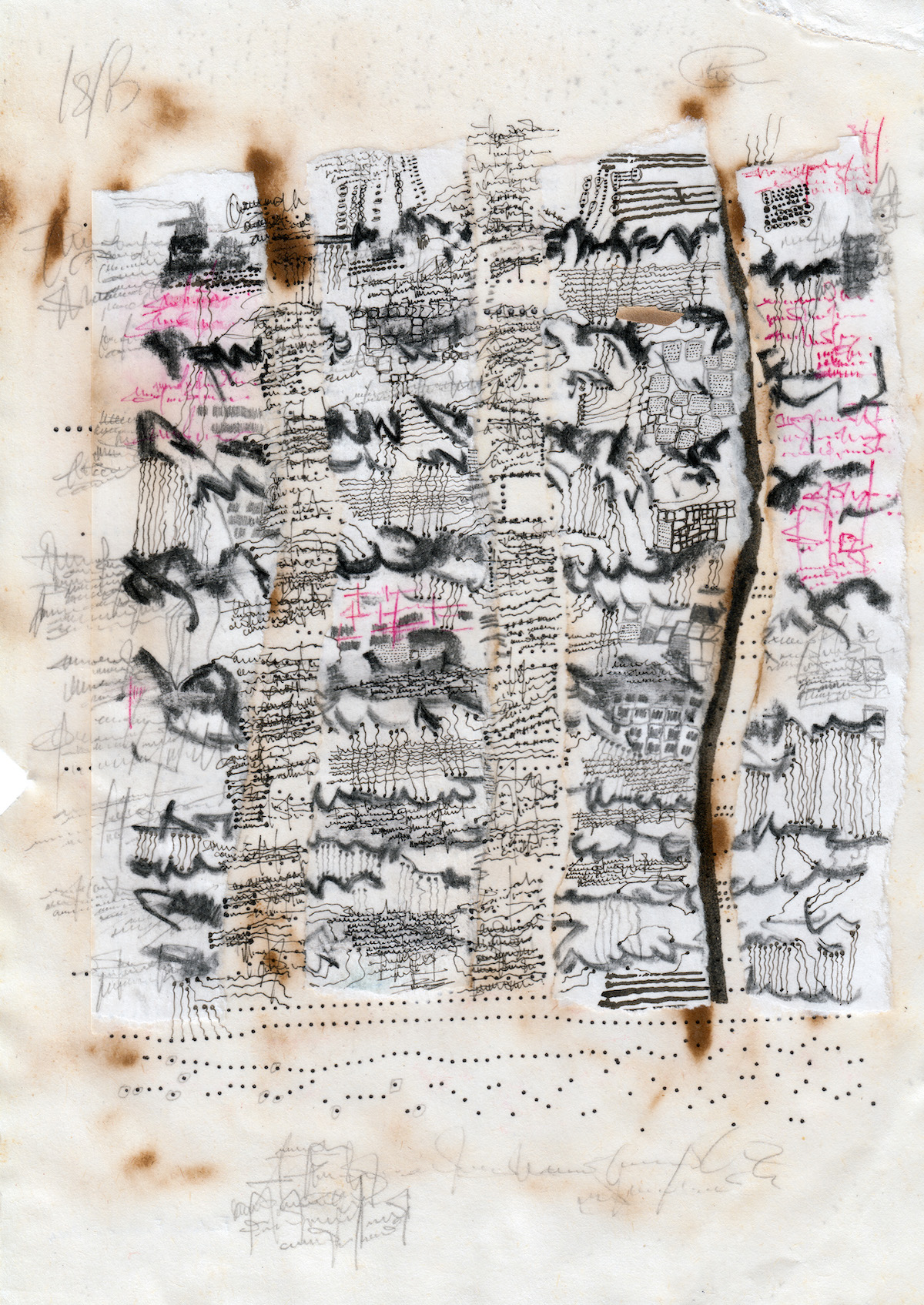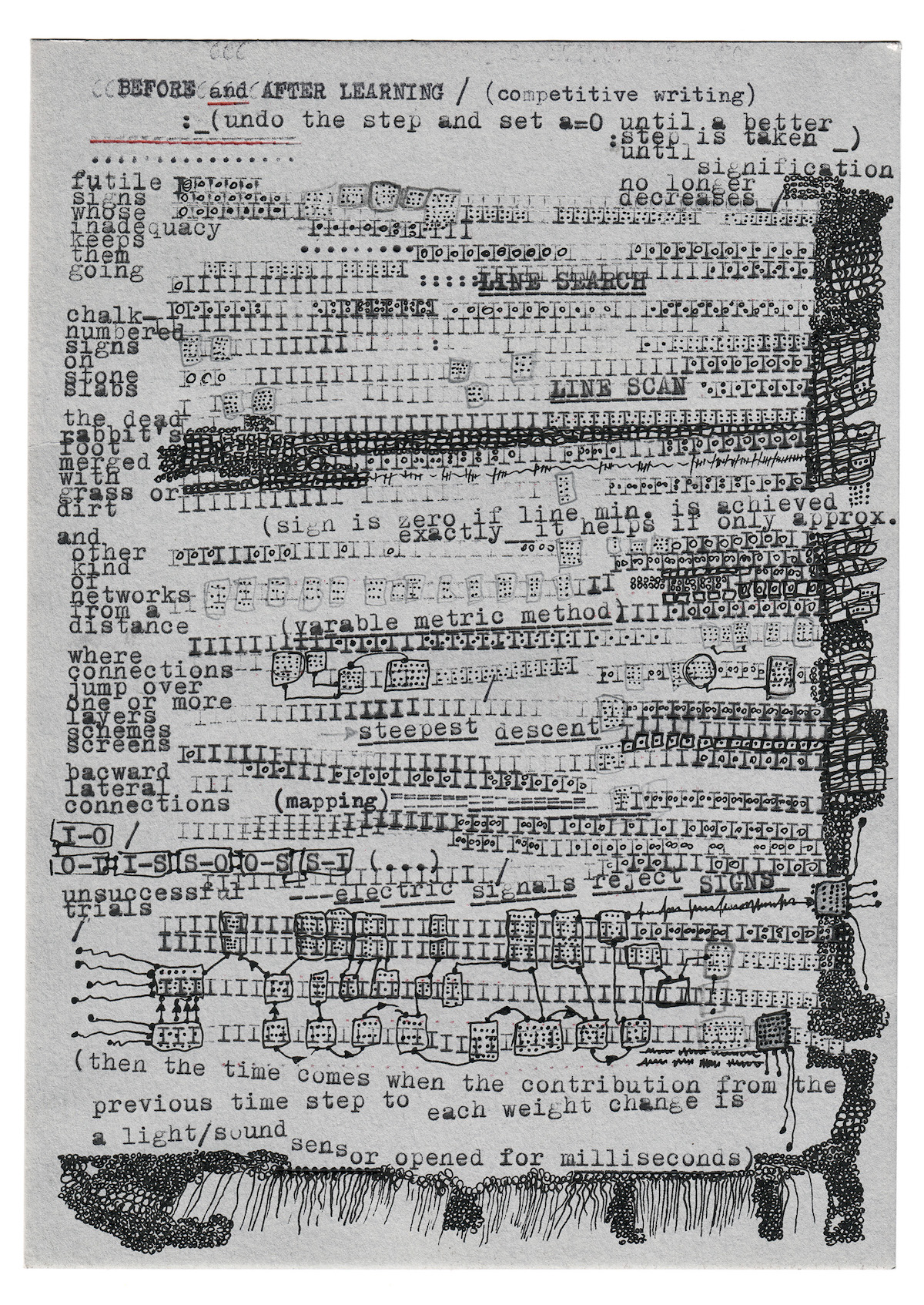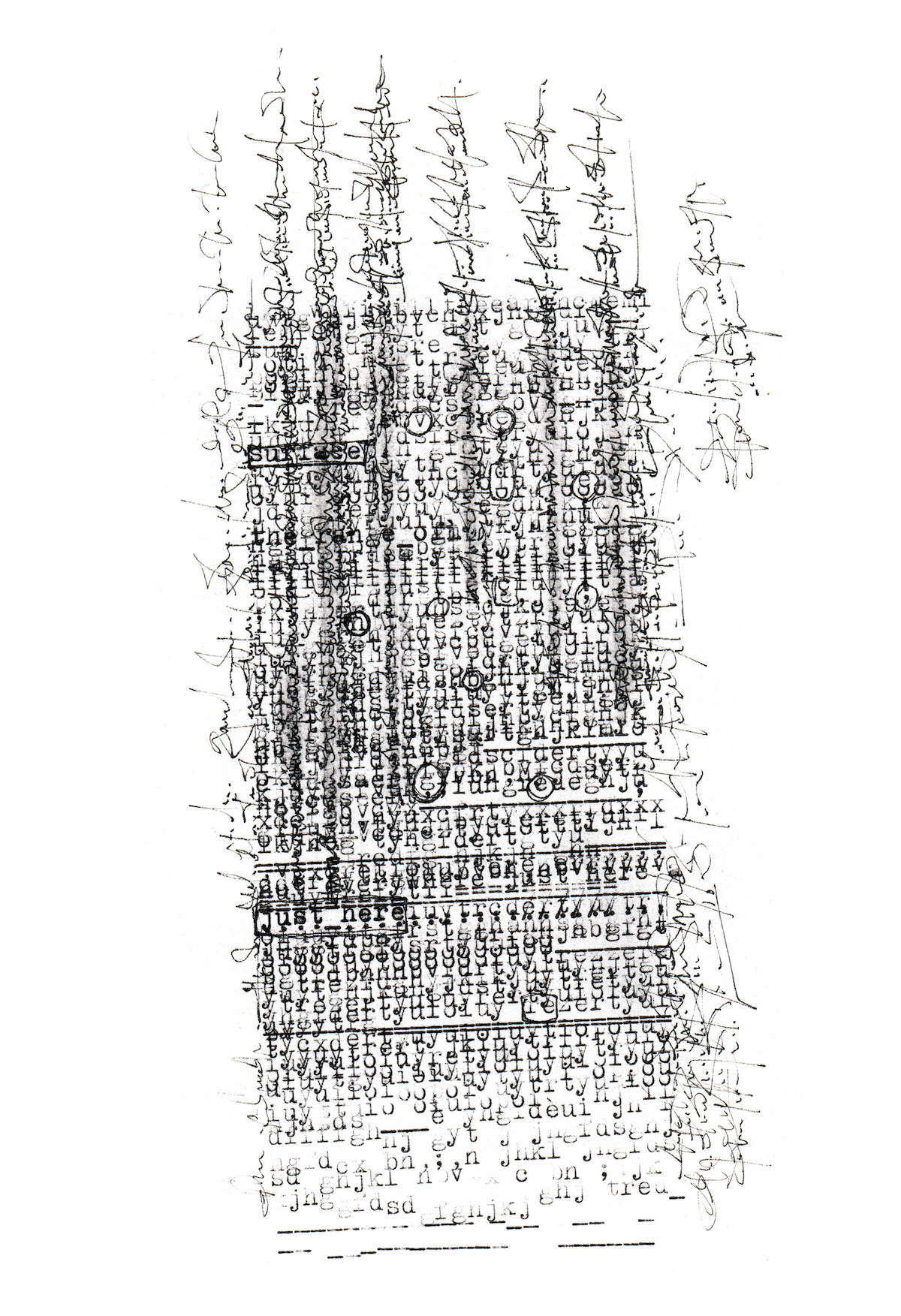A Zero-Point Writing?
Federico Federici
In ordinary texts, words are clearly discernible and are related to a syntax that regulates their connections. They objectively exist, and this does not impinge on their readability.
In asemic texts, on the contrary, the lack of “words” necessitates abandoning the claim that we can detect them in some dictionary. The signifier and the signified of a sign thus resemble the momentum (“speed”, in a way) and the position of a particle in the quantum world; we cannot precisely detect both at once, according to the Heisenberg uncertainty principle. This actually deprives textuality of the sense of reality with which we are familiar.
The asemic text challenges the reader to derive its own meaning, rather than merely serving as an aesthetic artefact that renounces signification.
An extensive conceptual breach subverts the entrenched dogma of experience, whose uniqueness is suspended through the mimicry of language. Although this shift often traces back to earlier ideas of writing, text falsification has become institutionalized.
Such a phenomenon occurs in the “no language’s land” between pure literature and visual art, where the spontaneous traits of handwriting are preferred over more rigid textual forms. Every dot, stain, and even every single bit in a digital array becomes part of the same loose alphabet.
Like smugglers on the guarded frontier of meaning, asemic writers exchange secret scripts or drafts of confidential notes.
When no code remains or is accepted for drawing signs, language reinvents itself in the common forge of form and meaning.
Since the writer relinquishes the role of deus ex machina, the reader or onlooker loses a traditional point of reference.
This is even more the case when all conventions are absorbed into networks of obscure, though densely organized, signs; different and more suitable paradigms must then be developed. According to Marcel Broodthaers, even a paper on jurisprudence proves to be inspiring in this respect: «La place que le mot y occupe est une place nette. L’ambiguïté du Droit tient sans doute à l’interprétation du texte; à l’esprit et non à la lettre.»[1]
On this basis, the question arises whether to equate the asemic level with a sort of language zero-point, a ground state of writing, or, most likely, the very state of the word before it encounters an alphabet.
By rephrasing the Heisenberg uncertainty principle, while the classical text may be worked out to near-meaninglessness, the asemic text persistently exhibits a residual meaning.
As structures collapse, dust particles attempt to relentlessly reorganize themselves, gravitating through the void of deconstruction.
When language lays down the laws, it is difficult to modify them; «[…] for words can only describe things of which we can form mental pictures, and this ability, too, is a result of daily experience […] for visualisation, however, we must content ourselves with […] incomplete analogies.»[2]
In asemic texts, signs and meanings are superseded by the pure notion of asemicism: writing attests to its inexhaustible delay in meaning, according to the seemingly paradoxical, yet strict, formalism of what remains illegible.
Thus, two systems coexist: one language embedded in a sediment of “things” and another embedded in a sediment of signs that have not been exposed to any “thing” yet, nor are they likely to be.
[1] «The place that the word occupies in it is a clear place. The ambiguity of the Law undoubtedly lies in the interpretation of the text; in its spirit, not literally.» Broodthaers, Marcel. Art poétique in Broodthaers, edited by Buchloh, Benjamin H. D., p. 16. Cambridge: MIT Press, 1987.
[2] Heisenberg, Werner. The Physical Principles of the Quantum Theory, translated into English by Eckhart C. and Hoyt, Franck C., p.10. Chicago: Dover Publications, 1930.


